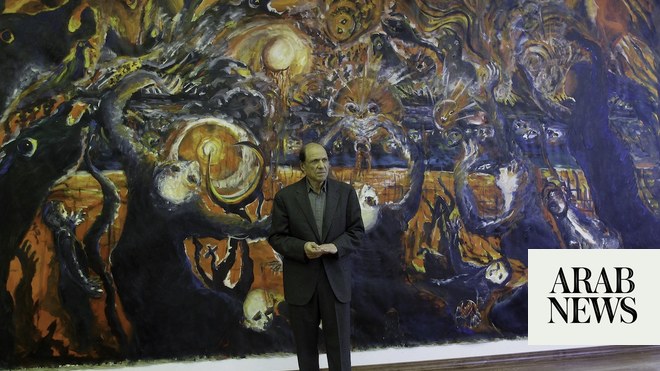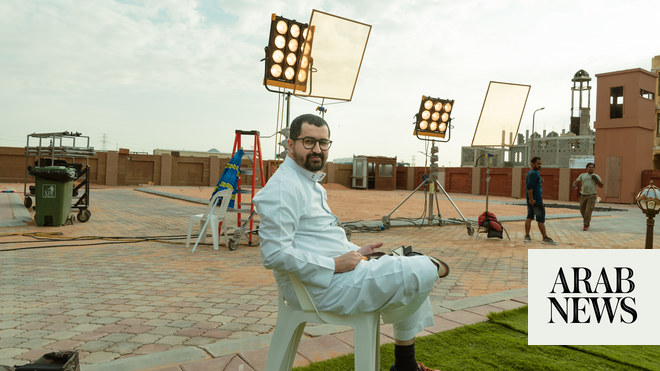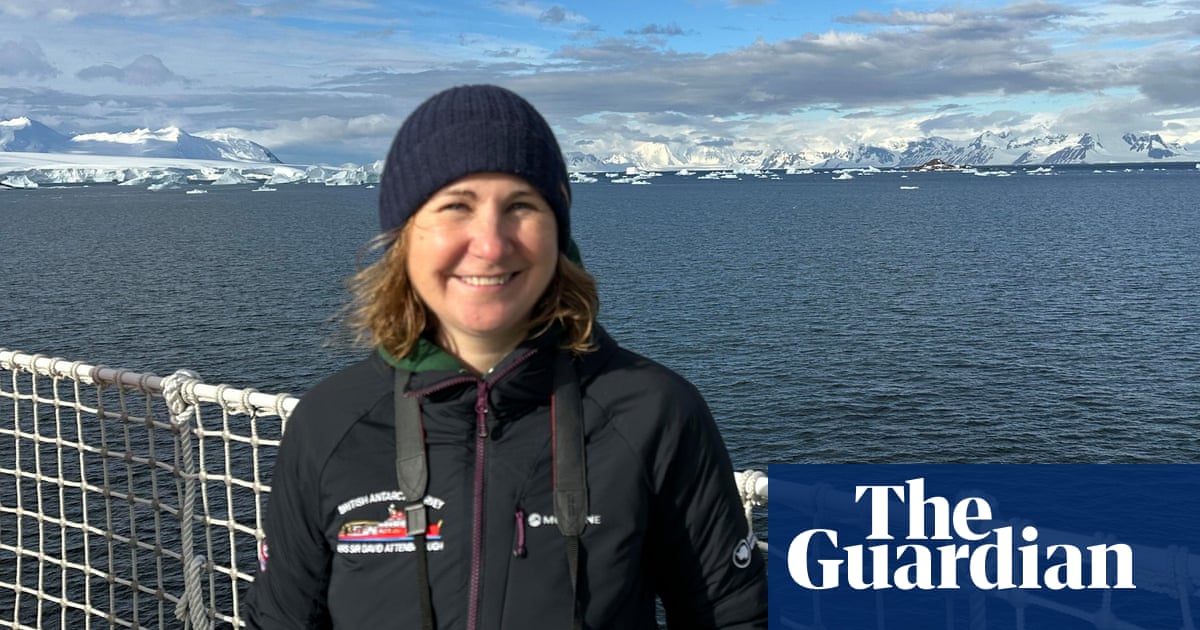
The final installment in our series focusing on contemporary Arab-American artists in honor of Arab-American Heritage Month
DUBAI: It’s been 48 years since the Lebanese Civil War broke out. The 15-year catastrophe split families apart and sent thousands to their graves. Although the conflict ended in 1990, its effects are still palpable in Lebanese society today. One artist who boldly captured it all on apocalyptic large-scale canvases was the Lebanese-American master Nabil Kanso, who died in 2019.
For the latest updates, follow us on Instagram @arabnews.lifestyle
“He’s one of the few artists that painted throughout the duration of the war and afterwards as well,” Daniel Kanso, the artist’s son and co-founder of the Estate of Nabil Kanso, tells Arab News.
Following Kanso’s death from cancer, the estate was founded in Atlanta, where the artist worked for nearly four decades until his passing.
“It was really a promise that we made to him,” says Daniel. “He built the bones of the foundation during his life. He was very meticulous in writing, cataloging and preserving his works, because he knew that a day would come when the world would be ready to embrace the work. He made a lot of sacrifices to do that. He put every penny and ounce of blood, sweat and tears into his work. Growing up with that, it’s hard not to feel a responsibility to be faithful to it.”
Nabil Kanso was born in 1940 to a Druze family and was raised in west Beirut. For his 16th birthday, he was gifted a camera. As political tensions rose in the late Fifties, he was told by his mother: “A camera is more dangerous than a gun.” He sketched instead. While there were no modern museums in the country at the time, Lebanon’s ancient ruins offered cultural inspiration for him. The Sixties were an exciting time for the young man; he travelled to the UK and Europe and educated himself on masters of war painting, including Picasso and Goya.
Kanso’s life in the United States began in New York in 1968. “Once he gets there, it really becomes his vocation to dedicate himself to art,” said Daniel. His first space in New York was a five-story townhouse, where a non-commercial, artist-run gallery was born. Though it proved unsustainable, it was frequented by art critics from Art News, the world’s oldest art magazine, and professionals including Alfred Barr, the Museum of Modern Art’s first director.
Kanso was radically doing things his own way. At a time when pop art and minimalism were in vogue, curators were not always accepting of his style of neo-expressionist canvases that took over entire walls. He didn’t sell his work at galleries or auction houses. “He wanted the work to do something larger and to have larger meaning,” explains Daniel. “He was painting to communicate a message of peace, pacifism, and humanism.”
Kanso was concerned by the political chaos of the Cold War era — which included the Lebanese Civil War, the Vietnam War, and unrest in Latin America — and by the Gulf Wars of the 90s and the 2000s. He was also inspired by literature and history. His large-scale work is dark, hellish, and confrontational.
“He wanted to activate you. He wanted you to be forced to confront what was happening and be surrounded by it,” says Daniel. “Art can’t save the world, but it can reveal something deeper about us and connect us.”
Kanso’s work was, at times, deemed too intense for the public. “He was ahead of his time,” notes Daniel. In the mid-80s, in the racialized deep South state of Georgia, he put on a show of paintings depicting a black man with a white woman, based on Shakespeare’s “Othello.” Some of the images were taken down and the media was there to cover the controversy. “It was really traumatic for him to see that,” Daniel says.
While the American art scene has now embraced artists of Arab background, that was not the case during Kanso’s time, when anti-Arab sentiment was strong. “An immigrant with a thick accent and dark skin expressing an unvarnished and direct opinion was challenging to the establishment,” says Daniel.
Beyond the fiery passion of his father’s work, Daniel remembers a gentle, family-oriented man, who was a “bridge builder.” Several estate projects are underway, including retrospectives in the US. Daniel and his sister Lilly are trying to raise awareness about their father’s remarkable life.
“This was an artist who lived and died for his work,” says Daniel. “We can see the hunger, as people learn more about the work. You’ll see this artist a lot more.”












